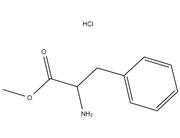Drug Design and Synthesis: H-DL-Val-OMe·HCl can serve as a raw material or intermediate in the synthesis of specific drugs. Through a series of chemical reactions and modifications, it can be transformed into drug molecules with specific biological activities, thereby playing a role in the treatment of certain diseases. Protein Engineering: As an amino acid derivative, H-DL-Val-OMe·HCl may participate in protein synthesis and modification processes. By introducing this specific amino acid derivative, it can regulate the structure and function of proteins, thereby influencing physiological and pathological processes in organisms. This regulatory effect is significant for developing targeted therapeutic solutions for specific diseases. Metabolic Regulation: H-DL-Val-OMe·HCl may exert therapeutic effects by influencing cellular metabolic pathways. By regulating key enzymes or pathways in the metabolic process, it can alter the metabolic state of cells, potentially playing a role in the treatment of metabolic diseases or the regulation of energy balance. Biological Probes and Diagnostic Tools: Due to its unique chemical properties, H-DL-Val-OMe·HCl may serve as a biological probe for studying interactions and signal transduction processes within organisms. By binding to specific biomolecules or cellular structures, it can assist scientists in better understanding the pathogenesis of diseases and provide powerful support for early diagnosis and treatment. | 

 China
China

